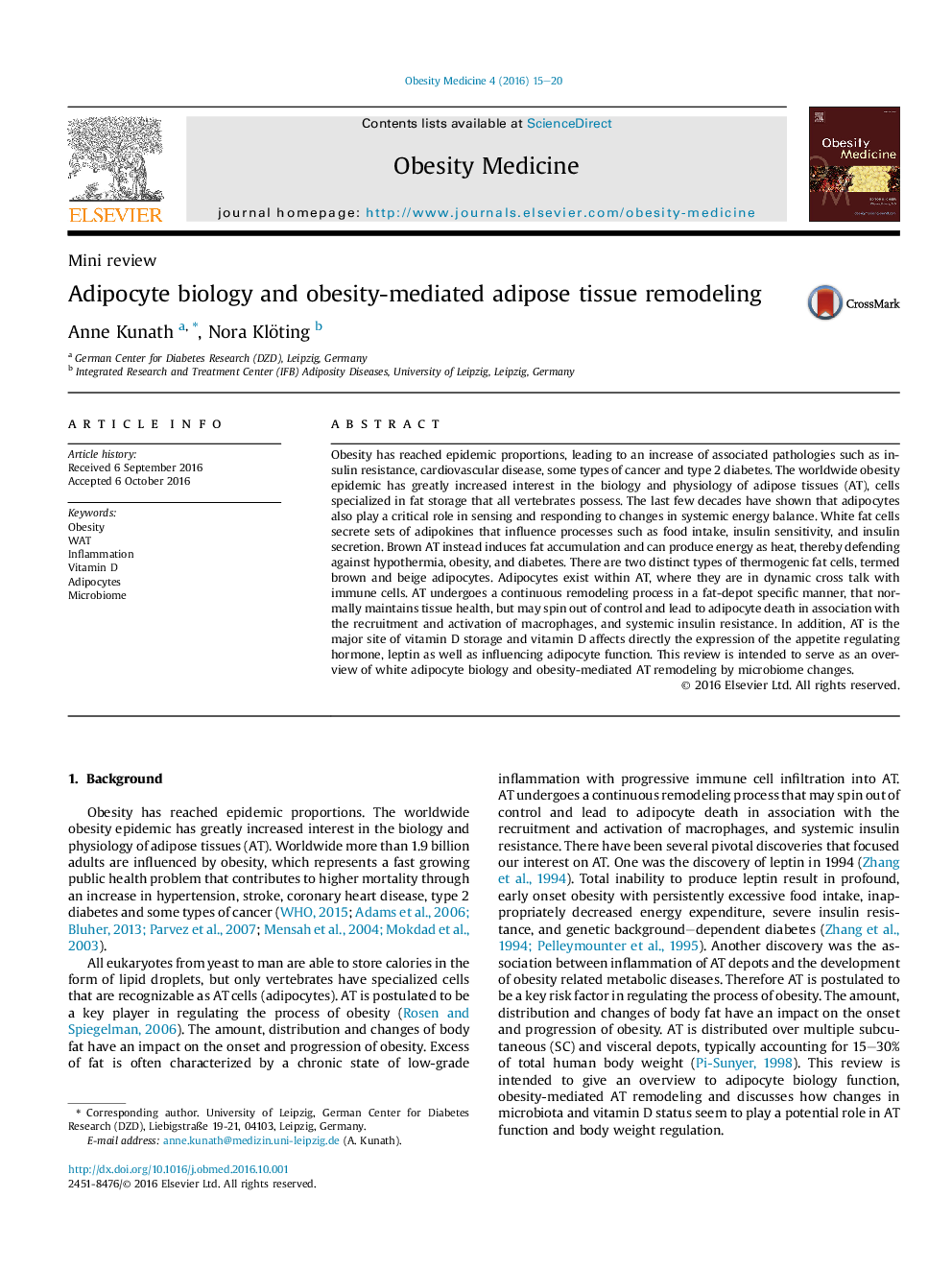| Article ID | Journal | Published Year | Pages | File Type |
|---|---|---|---|---|
| 5123785 | Obesity Medicine | 2016 | 6 Pages |
Obesity has reached epidemic proportions, leading to an increase of associated pathologies such as insulin resistance, cardiovascular disease, some types of cancer and type 2 diabetes. The worldwide obesity epidemic has greatly increased interest in the biology and physiology of adipose tissues (AT), cells specialized in fat storage that all vertebrates possess. The last few decades have shown that adipocytes also play a critical role in sensing and responding to changes in systemic energy balance. White fat cells secrete sets of adipokines that influence processes such as food intake, insulin sensitivity, and insulin secretion. Brown AT instead induces fat accumulation and can produce energy as heat, thereby defending against hypothermia, obesity, and diabetes. There are two distinct types of thermogenic fat cells, termed brown and beige adipocytes. Adipocytes exist within AT, where they are in dynamic cross talk with immune cells. AT undergoes a continuous remodeling process in a fat-depot specific manner, that normally maintains tissue health, but may spin out of control and lead to adipocyte death in association with the recruitment and activation of macrophages, and systemic insulin resistance. In addition, AT is the major site of vitamin D storage and vitamin D affects directly the expression of the appetite regulating hormone, leptin as well as influencing adipocyte function. This review is intended to serve as an overview of white adipocyte biology and obesity-mediated AT remodeling by microbiome changes.
